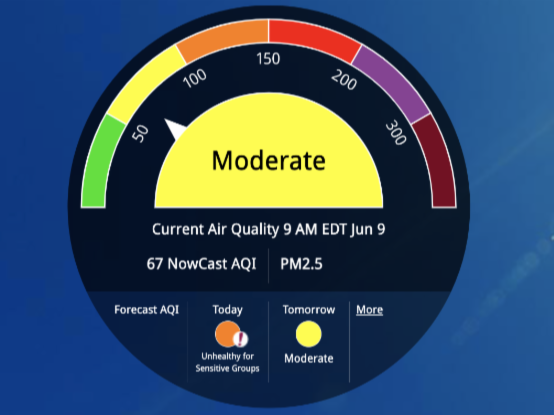When the Hunga Tonga-Hunga Ha’apai volcano in the Pacific Ocean erupted earlier this year, the event was one for the record books — in several surprising ways.
The January 15 eruption was so explosive that it injected water vapor so high that it touched space, a first-of-its-kind observation for an earthly volcano. And the event produced the greatest concentration of lightning ever detected — making it far flashier than the 2018 eruption of Krakatau in Indonesia or the 2021 tornado outbreak across the U.S. South.
Science News headlines, in your inbox
Headlines and summaries of the latest Science News articles, delivered to your email inbox every Friday.
Thank you for signing up!
There was a problem signing you up.
The eruption also released so much energy that its disturbance of a charged layer of Earth’s atmosphere, called the ionosphere, rivaled that of a solar geomagnetic storm.
Seismologists, geophysicists and oceanographers described these and other eruption superlatives at a news conference on December 12 and in several presentations in Chicago at the American Geophysical Union’s fall meeting.
“These are once in a lifetime … observations,” said Larry Paxton, an astrophysicist at Johns Hopkins University Applied Physics Laboratory in Laurel, Md.
He and colleagues examined data from NASA’s Global Ultraviolet Imager, on a spacecraft in orbit around the Earth. On the day of the eruption, Paxton said, the instrument revealed “something unusual” in the far-ultraviolet light portion of the electromagnetic spectrum: a roundish spot in the satellite data coinciding with the volcano’s location where there was a temporary decrease in those UV emissions.
The instrument doesn’t see anything in the atmosphere below about 100 kilometers above sea level, what’s typically thought of as the boundary of space. That means that some sort of emitted material — most likely water vapor from the undersea volcano — had reached high enough into space to briefly absorb those particles of light, the researchers reported. Scientists had previously estimated that the eruption extended past the stratosphere and into the mesosphere. The new finding suggests the explosion reached even higher.
The volcano began erupting in December 2021 (SN: 1/21/22). By early January, it was already “one of the most prolific lightning producers” on the planet, said Chris Vagasky, a meteorologist with Vaisala Inc., an environmental instruments company headquartered in Vantaa, Finland.
Using Vaisala’s Global Lightning Detection Network, Vagasky and colleagues estimate that on January 15 alone, there were at least 400,000 lightning strikes at and around the volcano — an order of magnitude higher than generally observed in Earth’s most powerful supercell thunderstorms, Vagasky said. “This was the most extreme lightning event ever detected by the global network.”
From astronomy to zoology
Subscribe to Science News to satisfy your omnivorous appetite for universal knowledge.
Some of the volcano’s explosive energy made it to the ionosphere, the layer of Earth’s atmosphere where charged plasma coexists with other atmospheric particles. Atmospheric pressure waves from the eruption propagated into space, shifting the plasma around (SN: 8/29/22).
Those plasma shifts then rippled along Earth’s magnetic field lines, resonating through the ionosphere to disturb plasma thousands of kilometers away. “It’s like plucking a guitar string,” said Claire Gasque, a space physicist at the University of California, Berkeley. (Gasque is the daughter of Science News’ news director, Macon Morehouse, who wasn’t involved in this article.)
In the vicinity of the volcano, that effect on the ionosphere from the January 15 eruption rivaled, and even surpassed, the impact of a minor solar geomagnetic storm that began on January 14, Gasque added. “Despite a simultaneous geomagnetic storm, the volcano dominated changes in ionospheric dynamics.”
“Most people think of space weather as caused by solar influences,” Gasque said. But these data suggest a volcano can have just as much power.
The volcano may yet break other records, the researchers said, as scientists continue studying data from the powerful explosion.














